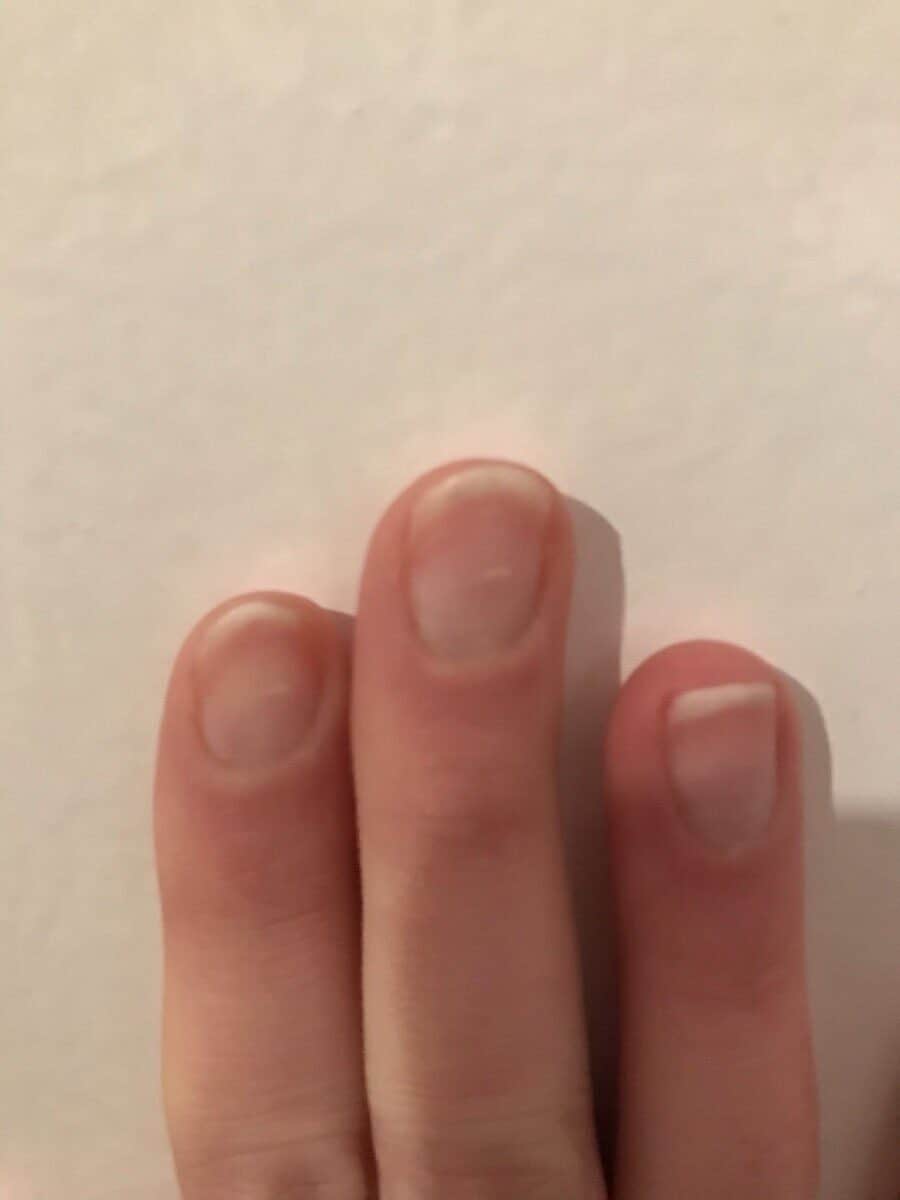It’s fairly common knowledge that to play the piano optimally, it’s best to keep your fingernails short. I even hear of piano teachers refusing to teach people who don’t cut their fingernails to an “acceptable” length. So when a new student comes to me with really long nails, or even fake nails, is this a problem?
Can You Play the Piano with Long Fingernails?
You can play the piano with long nails, but you will have to play with flat fingers to avoid the “clicking” sound of your nails hitting the keys. Playing with flat fingers will mean that you are limited in how fast you can play passages, the diversity of different sounds that you can achieve from the piano, and how much control you have with your playing overall.
Ideally with piano, most of the time we want our fingers to be naturally curved a bit, so that the pads of our fingertips are what is in contact with the piano keys. Sometimes we may stretch out our fingers so that they are more flat, in order to reach different stretches or achieve different sounds, but that’s usually the exception rather than the rule.
Long nails grow over part of the fingertips, meaning that when you curl your fingers, it’s the nails that come into contact with the keys, rather than the skin. You either deal with the constant click of nail against key, or, more commonly, you are forced to only play with your fingers more flat.
That being said, if you are willing to accept these limitations then there is nothing to stop you playing the piano with long nails. If you have long nails, you may find that over time you become frustrated by them limiting your piano-playing and you may decide that it is worth it to cut them, or you may still feel that your self-expression is more important, which is perfectly valid too!
As a young kid, I often forgot to cut my nails before my piano lesson, and was frequently told off by my teacher for it. As I got older and piano became more and more important to me, it became a no-brainer to keep my nails short. You have to make a choice as to how seriously you’re going to take piano.
How Short Should You Keep Your Fingernails Ideally?
If you have decided to keep your nails trimmed short, how short should you keep them?
For piano, as soon as you start to hear your nails click on the keys from playing with naturally curved fingers, that is an indicator that you should cut them. If you don’t want to get to that point, then it makes sense to cut your fingernails as soon as there is any substantial amount of white edge (known as the free margin) visible and able to be cut. Alternatively you can use a nail file more regularly to keep them very trimmed.
When I was young, my first piano teacher told me that she cut her fingernails every day, and I remember thinking that was impossible! But as I took piano more seriously, I became more and more frustrated by any excess amount of fingernail, to the point where I now cut my nails approximately every 2 days. People’s fingernails grow at different rates according to various factors such as age, diet and genetics, so how often to cut them will vary from person to person.
It’s also interesting that there is natural variation amongst people with how far the fingertips extend past trimmed fingernails. Some people have more leeway and will be able to get away with having slightly longer nails with no impact on their piano technique.
Why Do My Short Fingernails Still Click on the Piano Keys?
If you’ve got short fingernails but are still finding that your nails click against the piano keys, then you may be curling your fingers too much. The natural curve that we want from our fingers most of the time is actually less curled than most people think when they are told by piano teachers to curl their fingers.
To find a relaxed curl position, let your hands hang naturally by your side and see where your fingers fall when you have relaxed them. That is likely to be a good angle for your fingers to be most of the time when you’re playing the piano.

Can You Wear Nail Varnish When Playing the Piano?
You can wear nail varnish when playing the piano, and it should not impact you in any meaningful way. The only thing to avoid when playing the piano with nail varnish is playing glissandi using your nails, as the paint may chip off onto the keys. You can use the fleshy part of your fingers instead to play a glissando, or just miss it out in your practice.
I do find though that my fingers feel heavier when I am wearing nail varnish. This may just be psychological, but either way that’s not an ideal thing to be feeling. I personally would never wear nail varnish for performances.
Can You Wear Fake Nails and Play the Piano?
You can wear fake nails and play some repertoire on the piano, but they will limit your playing in terms of speed, range of sound qualities achieved, and overall control of your playing i.e. accuracy. The longer the fake nail, the more limited your piano technique will be.
I have had a few students who always had fake nails and they could play a bit, but at a certain point it always becomes limiting for them. When they ask questions like “how do I play this passage faster?”, I have to be honest and tell them that they are probably playing it as fast as they can with fake nails and the flat fingers that come along with that.
Should I Let My Piano Student Play with Long Nails?
I know that some piano teachers are very strict with their students about how short their nails need to be. I am not, and here’s why:
Everyone has different priorities in their life, and just because I value piano as very important in my life, that doesn’t mean that I think that everyone should. People’s self-expression is often very important to them, and it is to me too, in other ways.
Most of my students are not going to become professional pianists (probably!), and they are hopefully playing because it’s fun and they enjoy it. Piano is a nice addition to their life, rather than the main focal point of it, and I think it’s unreasonable to expect other things to revolve around piano for them. As explained above, it is possible to make some progress with piano-playing with sub-optimal technique.
It’s important to explain to them the potential benefits of short nails when it comes to piano-playing; some of them may just not have been aware of this, and may be happy to keep their nails short. But if they don’t want to cut their nails then that’s up to them.
Teachers who pressure children to cut their nails are not treating them consensually, and teachers who pressure adult students to cut their nails will likely find that those students go and find a different teacher anyway.
If there’s a student who temporarily has long fake nails for a particular event one week, and is unable to play using their usual technique, then we can spend the lesson doing aural tests, music theory, discussing repertoire, or any other musical activity that doesn’t involve playing.
If long nails are more permanent thing for someone then I remind myself that my job is to enable people to enjoy music, and not to get them to make as much progress as humanly possible!

